16 start with H start with H
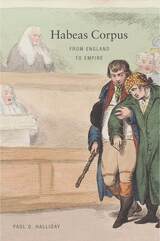
We call habeas corpus the Great Writ of Liberty. But it was actually a writ of power. In a work based on an unprecedented study of thousands of cases across more than five hundred years, Paul Halliday provides a sweeping revisionist account of the world’s most revered legal device.
In the decades around 1600, English judges used ideas about royal power to empower themselves to protect the king’s subjects. The key was not the prisoner’s “right” to “liberty”—these are modern idioms—but the possible wrongs committed by a jailer or anyone who ordered a prisoner detained. This focus on wrongs gave the writ the force necessary to protect ideas about rights as they developed outside of law. This judicial power carried the writ across the world, from Quebec to Bengal. Paradoxically, the representative impulse, most often expressed through legislative action, did more to undermine the writ than anything else. And the need to control imperial subjects would increasingly constrain judges. The imperial experience is thus crucial for making sense of the broader sweep of the writ’s history and of English law.
Halliday’s work informed the 2008 U.S. Supreme Court ruling in Boumediene v. Bush on prisoners in the Guantánamo detention camps. His eagerly anticipated book is certain to be acclaimed the definitive history of habeas corpus.
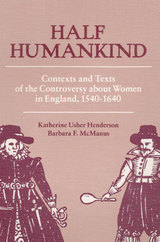

If Harvard can be said to have a literature all its own, then few universities can equal it in scope. Here lies the reason for this anthology—a collection of what Harvard men (teachers, students, graduates) have written about Harvard in the more than three centuries of its history. The emphasis is upon entertainment, upon readability; and the selections have been arranged to show something of the many variations of Harvard life.
For all Harvard men—and that part of the general public which is interested in American college life—here is a rich treasury. In such a Harvard collection one may expect to find the giants of Harvard’s last 75 years—Eliot, Lowell, and Conant—attempting a definition of what Harvard means. But there are many other familiar names—Henry Dunster, Oliver Wendell Holmes, James Russell Lowell, Henry Adams, Charles M. Flandrau, William and Henry James, Owen Wister, Thomas Wolfe, John P. Marquaud. Here is Mistress Eaton’s confession about the bad fish served to the wretched students of Harvard’s early years; here too is President Holyoke’s account of the burning of Harvard Hall; a student’s description of his trip to Portsmouth with that aged and Johnsonian character, Tutor Henry Flynt; Cleveland Amory’s retelling of the murder of Dr. George Parkman; Mayor Quiney’s story of what happened in Cambridge when Andrew Jackson came to get an honorary degree; Alistair Cooke’s commentary on the great Harvard–Yale cricket match of 1951. There are many sorts of Harvard men in this book—popular fellows like Hammersmith, snobs like Bertie and Billy, the sensitive and the lonely like Edwin Arlington Robinson and Thomas Wolfe, and independent thinkers like John Reed. Teachers and pupils, scholars and sports, heroes and rogues pass across the Harvard stage through the struggles and the tragedies to the moments of triumph like the Bicentennial or the visit of Winston Churchill.
And speaking of visits, there are the visitors too—the first impressions of Harvard set down by an assortment of travelers as various as Dickens, Trollope, Rupert Brooke, Harriet Martineau, and Francisco de Miranda, the “precursor of Latin American independence.”
For the Harvard addict this volume is indispensable. For the general reader it is the sort of book that goes with a good living-room fire or the blissful moments of early to bed.
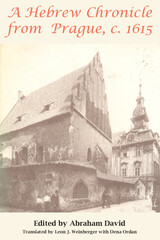
"This slender anonymous work, spanning 1389 to 1611, presents the priorities and concerns of a Jewish community straddling the late medieval and early modern periods. Ample footnotes and explanations provide the lay reader with sufficient background to understand the references to historical events and figures, to ideologies and to institutions. A comprehensive introduction presents the realities of Prague and Bohemia, as well as offering a helpful discussion of the chronicle and other contemporary Jewish accounts."
—Conservative Jewish Quarterly
"In about 1615 an anonymous Jew from Prague composed a short Hebrew chronicle to recount 'the expulsions, miracles, and other occurrences befalling [the Jews] in Prague and the other lands of our long exile.' Abraham David discovered the manuscript [and] added glosses, historical notes, and an introduction. . . . The chronicle, with its brief annual entries, is not a continuous narrative, but does give a feeling of immediacy, like a newspaper."
—Polin: Studies in Polish Jewry
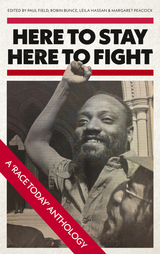
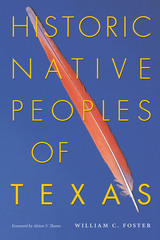
Several hundred tribes of Native Americans were living within or hunting and trading across the present-day borders of Texas when Cabeza de Vaca and his shipwrecked companions washed up on a Gulf Coast beach in 1528. Over the next two centuries, as Spanish and French expeditions explored the state, they recorded detailed information about the locations and lifeways of Texas's Native peoples. Using recent translations of these expedition diaries and journals, along with discoveries from ongoing archaeological investigations, William C. Foster here assembles the most complete account ever published of Texas's Native peoples during the early historic period (AD 1528 to 1722).
Foster describes the historic Native peoples of Texas by geographic regions. His chronological narrative records the interactions of Native groups with European explorers and with Native trading partners across a wide network that extended into Louisiana, the Great Plains, New Mexico, and northern Mexico. Foster provides extensive ethnohistorical information about Texas's Native peoples, as well as data on the various regions' animals, plants, and climate. Accompanying each regional account is an annotated list of named Indian tribes in that region and maps that show tribal territories and European expedition routes.
This authoritative overview of Texas's historic Native peoples reveals that these groups were far more cosmopolitan than previously known. Functioning as the central link in the continent-wide circulation of trade goods and cultural elements such as religion, architecture, and lithic technology, Texas's historic Native peoples played a crucial role in connecting the Native peoples of North America from the Pacific Coast to the Southeast woodlands.
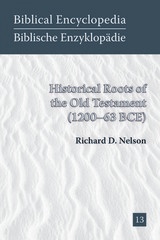
A thorough overview of the history of ancient Israel for research and classroom use
Richard D. Nelson charts the beginning of the Iron Age and the emergence of Israel and its literature, including the kingdoms of Israel and Judah, the downfall of Israel, Judah in the Assyrian and Babylonian periods, Yehud and Persia, and the Hellenistic period. Each chapter provides a summary of the period under consideration, a historical reconstruction of the period, based on biblical and extrabiblical evidence; a critical study of the biblical literature deriving from or associated with the period, and theological conclusions that readers may draw from the relevant biblical texts.
Features:
- Balanced coverage of controversial topics
- Extensive bibliographies at the beginning of each chapter
- Lists of rulers and key dates for reference and classroom use
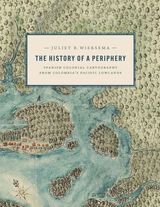
An exploration of Colombian maps in New Granada.
During the late Spanish colonial period, the Pacific Lowlands, also called the Greater Chocó, was famed for its rich placer deposits. Gold mined here was central to New Granada’s economy yet this Pacific frontier in today’s Colombia was considered the “periphery of the periphery.” Infamous for its fierce, unconquered Indigenous inhabitants and its brutal tropical climate, it was rarely visited by Spanish administrators, engineers, or topographers and seldom appeared in detail on printed maps of the period.
In this lavishly illustrated and meticulously researched volume, Juliet Wiersema uncovers little-known manuscript cartography and makes visible an unexamined corner of the Spanish empire. In concert with thousands of archival documents from Colombia, Spain, and the United States, she reveals how a "periphery" was imagined and projected, largely for political or economic reasons. Along the way, she unearths untold narratives about ephemeral settlements, African adaptation and autonomy, Indigenous strategies of resistance, and tenuous colonialisms on the margins of a beleaguered viceroyalty.


Geoffrey of Monmouth’s History of the Kings of Britain—the earliest work to detail the legendary foundation of Britain by Brutus the Trojan and the life of King Arthur—was among the most widely read books throughout the Middle Ages. Its sweeping account of the Britons began long before the Romans and challenged the leading histories of the twelfth century. Merlin, Guinevere, Mordred, Yvain, Gawain, and other popular Arthurian figures first come to life in Geoffrey’s chronicle. It was the ultimate source of tales retold in Malory’s Morte d’Arthur, Shakespeare’s Cymbeline and King Lear, and Tennyson’s Idylls of the King.
The History survives in hundreds of manuscripts in Geoffrey’s standard text. This volume presents the first English translation of what may have been his source, the anonymous First Variant Version. This shorter and less polished Latin version of the History is attested in just a handful of manuscripts. It belonged to and was probably written by Archdeacon Walter of Oxford, who died in 1151.

Founded by Constantine the Great, rebuilt by Justinian, and redecorated in the ninth, tenth, and twelfth centuries, the Church of the Holy Apostles in Constantinople was the mausoleum of emperors, patriarchs, and saints. It was also a key station in the ceremonies of the city, the site of an important school, a major inspiration for apostolic literature, and briefly the home of the patriarch. Despite its significance, the church no longer exists, replaced by the mosque of Mehmet II after the fall of the city to the Ottomans. Today the church is remembered primarily from two important middle Byzantine ekphraseis, which celebrate its beauty and prominence, as well as from architectural copies and manuscript illustrations.
Scholars have long puzzled over the appearance of the church, as well as its importance to the Byzantines. Anxious to reconstruct the building and its place in the empire, an early collaborative project of Dumbarton Oaks brought together a philologist, an art historian, and an architectural historian in the 1940s and 1950s to reconstruct their own version of the Holy Apostles. Never fully realized, their efforts remained unpublished. The essays in this volume reconsider their project from a variety of vantage points, while illuminating differences of approach seventy years later, to arrive at a twenty-first-century synthesis.

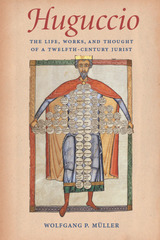
This book provides the point of departure for anyone wishing to study Huguccio first-hand. It will be worthy reading for students of medieval canon law and an essential addition to all libraries supporting research in medieval studies.

The disciplines now known as the humanities emerged in their modern form during the Italian Renaissance as the result of an educational movement begun by humanist teachers, writers, and scholars in the early fourteenth century. These educators argued for the usefulness of classical literature as an instrument for training young men and women, not only in the arts of language and eloquence, but also in civic virtue and practical wisdom.
This volume provides new translations, commissioned for the I Tatti Renaissance Library, of four of the most important theoretical statements that emerged from the early humanists’ efforts to reform medieval education: Pier Paolo Vergerio, “The Character and Studies Befitting a Free-Born Youth”; Leonardo Bruni, “The Study of Literature”; Aeneas Silvius Piccolomini (Pope Pius II), “The Education of Boys”; and Battista Guarino, “A Program of Teaching and Learning.”
The original text of these four documents with Craig W. Kallendorf’s translation is also available in a facing-page edition.

The cycle of disciplines now known as the humanities emerged in their modern form during the Italian Renaissance as the result of an educational movement begun by humanist teachers, writers, and scholars of the early Quattrocento. The movement argued for the usefulness of classical literature as an instrument for training young men and women, not only in the arts of language and eloquence, but also in civic virtue and practical wisdom. This volume contains four of the most important theoretical statements that emerged from the early humanists’ efforts to reform medieval education.
The four texts are Pier Paolo Vergerio, “The Character and Studies Befitting a Free-Born Youth”; Leonardo Bruni, “The Study of Literature”; Aeneas Silvius Piccolomini (Pope Pius II), “The Education of Boys”; and Battista Guarino, “A Program of Teaching and Learning.” The Vergerio and Guarino texts appear in English for the first time.

Written in the early seventeenth century, the Hustynja Chronicle represents the first attempt of early modern chroniclers to write a systematic history of Ukraine. The chronological sweep of the text is ambitious, describing the history of Kyivan Rus´ and Ukraine from biblical times until the Union of Brest in 1596. The text covers many critical periods in Ukrainian history, including pre-Mongol Rus´, the expansion of the Grand Duchy of Lithuania, and the emergence of the Cossacks. Its unique style blends the older tradition of presenting information under yearly entries with a newer, more narrative style of chronicle modeled on the works of Polish chroniclers such as Stryjkowski and Bielski.
This publication marks the first time that the Hustynja Chronicle has appeared in a scholarly edition. One copy originally found in the Mharsk Monastery serves as the exemplar for the main text and is accompanied by notes representing variants from six other copies of the text. An introduction by Ukrainian historian Dr. Oleksiy Tolochko, in both the original Ukrainian and English translation, provides a detailed description and history of the chronicle. The Hustynja Chronicle is an essential source for scholars interested in medieval and early-modern Ukrainian history, philology, and chronicle writing.
READERS
Browse our collection.
PUBLISHERS
See BiblioVault's publisher services.
STUDENT SERVICES
Files for college accessibility offices.
UChicago Accessibility Resources
home | accessibility | search | about | contact us
BiblioVault ® 2001 - 2024
The University of Chicago Press









